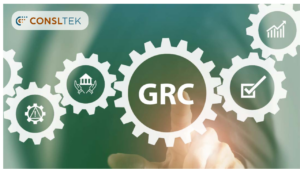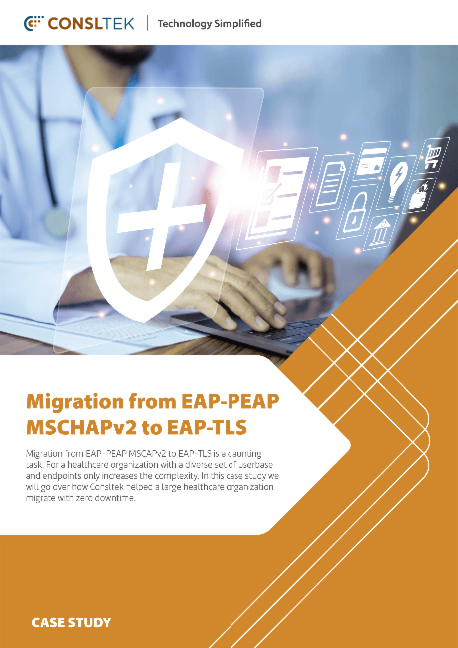GRC stands for Governance, Risk, and Compliance, a strategic framework designed to align organizational objectives, manage risks, and ensure adherence to regulations and internal policies.
In this, governance involves ethical and strategic management by leadership, ensuring that the organization’s activities support its goals and remain accountable to stakeholders.
Whereas risk management in GRC is the process of identifying, assessing, and minimizing the security issues that may put the organization’s operations or objectives in danger. This includes both threats and opportunities.
Besides the above, compliance is the organization’s adherence to relevant laws, regulations, guidelines, and best practices, whether mandated externally or established internally.
The integrated nature of GRC allows departments to share critical information for better reporting. Therefore, it prevents duplicated efforts and enables better decision-making by connecting these three pillars in a unified approach.
Which Companies Need GRC? Are Any Companies Exempt?
GRC frameworks are especially vital in industries subject to heavy regulation, such as healthcare, finance, and technology, where strict standards like HIPAA, GDPR, and PCI DSS apply. Besides these, large enterprises with complex structures and global footprints require robust GRC practices to remain effective and compliant.
On the other hand, small startups may not need a full-scale GRC program. However, even smaller organizations benefit from basic governance and risk management to protect data and ensure responsible operations.
It is important to note that GRC is not optional for regulated industries. While some small, less regulated businesses may not need a full-fledged GRC process, every company faces some level of legal and operational risk, and foundational GRC practices should not be overlooked by any organization. Start with a basic risk management and governance program to begin with, and as the organization scales, organizations can adopt more stringent guidelines across the business locations.
Failing to implement GRC can result in fines, legal issues, and reputational damage. Therefore, no industry is truly exempt from having some form of governance, risk management, or compliance needs.
GRC across the Annual Organizational Lifecycle
GRC activities span several events throughout the year and are intrinsic to the organizational lifecycle. Here are the various events for GRC on a year-long basis:
- Initiation Phase: Creating new policies or updating existing ones, often triggered by regulatory changes, new risks, or changes in business processes.
- Development Phase: Drafting policies and gathering feedback from stakeholders and experts.
- Implementation Phase: Rolling out policies, assigning responsibilities, conducting staff training, and setting up monitoring systems.
- Maintenance Phase: Conduct regularly (annual or biannual) reviews of policies to ensure continued relevance and effectiveness.
- Retirement Phase: Discontinuing outdated policies, as needs and regulations evolve.
As a result, companies must consistently maintain GRC procedures, while also updating and integrating them with annual planning, risk assessments, audits, and compliance checks to always align with growing business needs.
Challenges in Executing GRC for Businesses
Companies commonly encounter GRC challenges in the following areas:
- Manual Processes: Reliance on spreadsheets, emails, and other manual and disconnected tools may lead to errors in reporting and thereby delays. This, in turn, creates inefficiencies, a lack of accountability, and poor visibility in the GRC process.
- Complex Regulatory Environments: Keeping up with rapidly changing global regulations and compliance standards can be overwhelming, especially for companies operating across international jurisdictions. It adds to the pressure on global firms.
- Siloed Operations: Departments managing GRC activities in silos can result in fragmented data, duplicate work, and compliance gaps.
- Resource Constraints: Limited budgets, under-investment in technology, and a shortage of trained staff hinder effective GRC execution.
- Technology Integration: Legacy software and resistance to change mean many companies are stuck in outdated processes, thus making transition and change adoption difficult.
Due to these challenges, organizations often experience tedious, repetitive work, gaps in risk awareness, and poor reporting. Slower execution, in turn, leads to reduced visibility for the GRC process.

Making GRC an Easy Process for Internal and External Stakeholders
To streamline GRC and make it easier for internal and external stakeholders, organizations can follow the steps below:
Invest in modern GRC software
Automation helps with smoother workflows, better reporting, well-integrated systems, and centralized documentation. This, in turn, reduces administrative burden and helps produce real-time reports. Hence, investing in modern GRC software saves time.
Stakeholder engagement
This increases GRC success, as it communicates objectives, roles, and responsibilities early. Regular training and teamwork turn GRC into a shared responsibility across departments. This is bound to improve business growth.
Break down the silos
Fostering cross-departmental cooperation is crucial for encouraging holistic risk management and compliance.
Continuous monitoring and review
Organizations must ensure to stay updated on regulatory changes, monitor risks, and adjust policies proactively.
User-friendly solutions
Adopt platforms that simplify data collection, evidence management, and audit workflows for both internal teams and external auditors.
Such a well-planned GRC program saves time, enhances transparency, and thereby builds trust. It protects organizational reputation while maintaining compliance and productivity.
Conclusion
GRC is not just a checkbox. It safeguards organizations and helps them achieve objectives, mitigate risks, and uphold ethical standards. Every business, regardless of size or industry, needs a tailored strategy to benefit from a scalable, integrated GRC process. Especially today, as business environments become more complex and regulations keep changing.


0 Comments